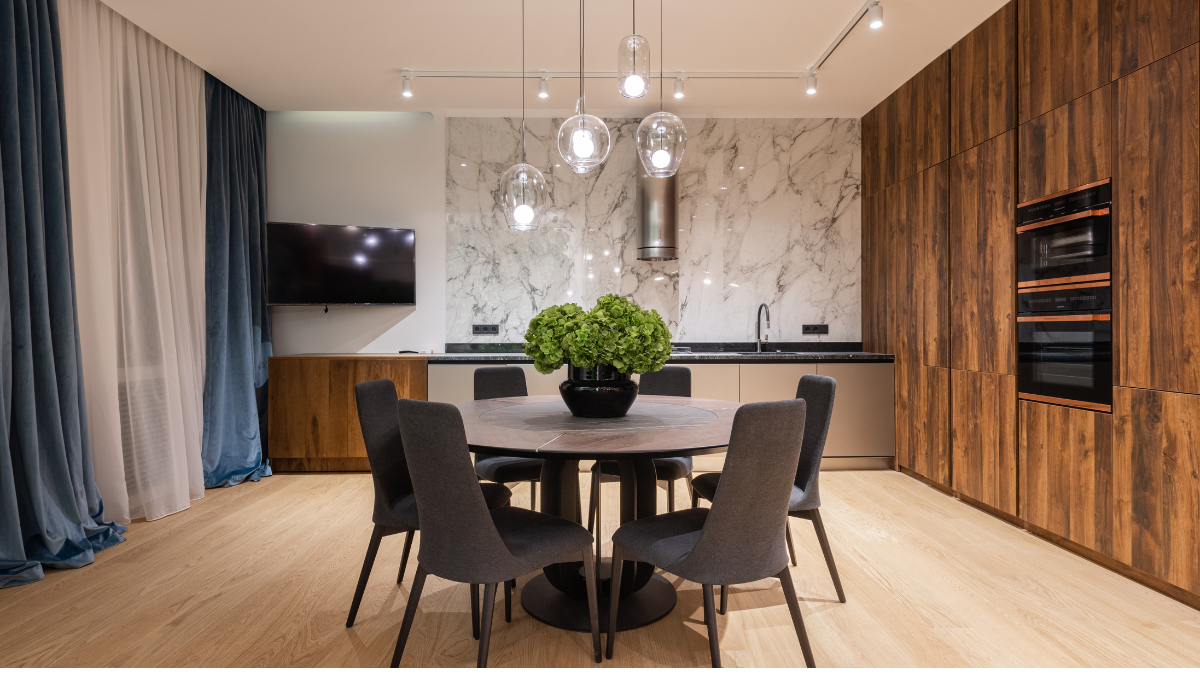Lighting plays a crucial role in making your kitchen functional, beautiful, and inviting. Recessed lighting, often called can lights or pot lights, is a popular choice because it provides clean, modern illumination without bulky fixtures. But to get the best results, careful planning is key.
In this post, we’ll walk you through how to plan kitchen recessed lighting so you can enjoy a well-lit, efficient kitchen space.

Why Choose Recessed Lighting for Your Kitchen?
- Clean, modern look
- Saves space and avoids clutter
- Provides even, widespread light
- Can be combined with other lighting types (pendants, under-cabinet lights)
- Adjustable options for focus lighting

Step-by-Step Guide to Planning Kitchen Recessed Lighting
1. Assess Your Kitchen Layout
Start by measuring your kitchen’s size and shape. Identify key areas:
- Cooking zones (stove, oven)
- Food prep areas (countertops, islands)
- Cleaning zones (sink, dishwasher)
- Dining or eating spaces
This will help you decide where focused lighting is needed versus general ambient lighting.
2. Decide How Many Recessed Lights You Need
A general rule for recessed lighting is 1 light per 4 to 6 square feet for an 8-foot ceiling. For higher ceilings, add more lights to compensate.
Example:
A 12 ft by 10 ft kitchen = 120 sq ft
120 ÷ 6 = 20 lights (minimum) — This is too many for a kitchen, so adjust spacing or combine with other lights.
A better approach: space lights evenly 4 to 6 feet apart, depending on beam angle and brightness.
3. Choose the Right Spacing and Placement
- Place lights about 24 to 30 inches away from walls to avoid shadows on countertops.
- Space lights evenly across the ceiling for uniform light distribution.
- Over work areas like islands or counters, add extra lights for task lighting.
- Avoid placing lights too close to each other to prevent hot spots.
4. Select the Right Size and Type of Recessed Lights
- Size: Common sizes are 4, 5, or 6 inches diameter.
- Beam angle: Narrow beam (~25 degrees) for focused task lighting; wide beam (~60 degrees) for general lighting.
- Dimmable LED: Choose LED bulbs for energy efficiency and dimmable options for lighting flexibility.
5. Plan for Different Lighting Layers
Combine recessed lighting with other types for a balanced effect:
- Ambient lighting: General ceiling recessed lights.
- Task lighting: Recessed lights focused on work areas or under-cabinet lights.
- Accent lighting: Pendant lights over islands or decorative spots.
Conclusion
Proper planning of kitchen recessed lighting can transform your space by improving visibility, ambiance, and style. By assessing your kitchen’s layout, choosing the right number and type of lights, and combining with other lighting layers, you can create a kitchen that’s both beautiful and functional.
